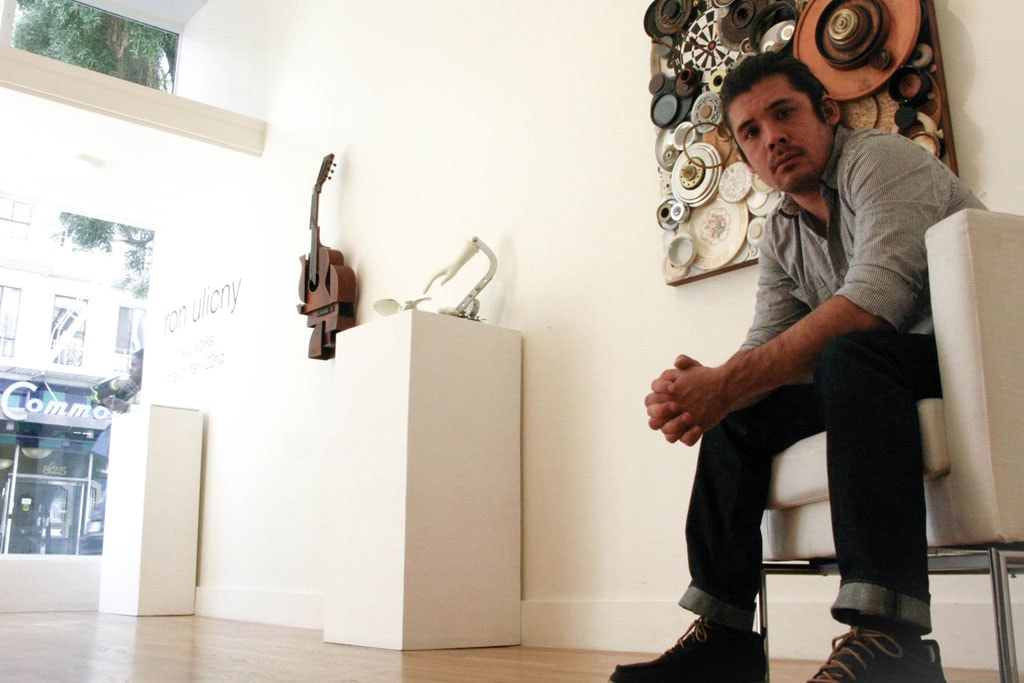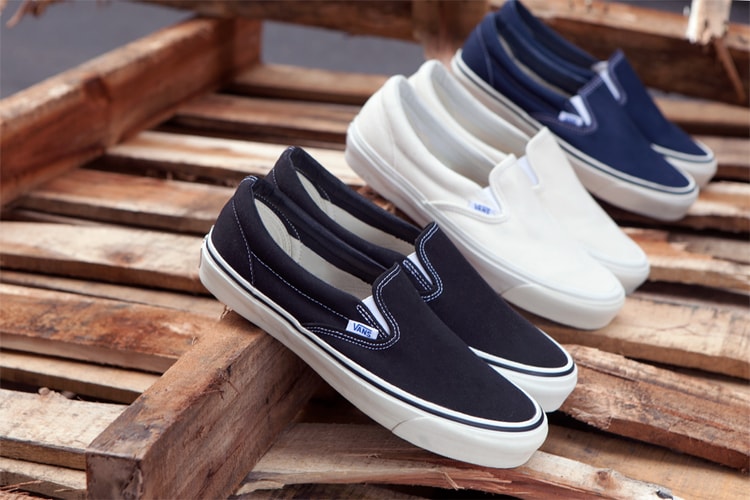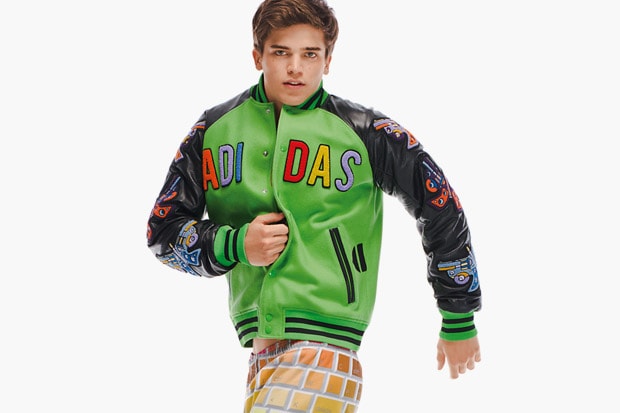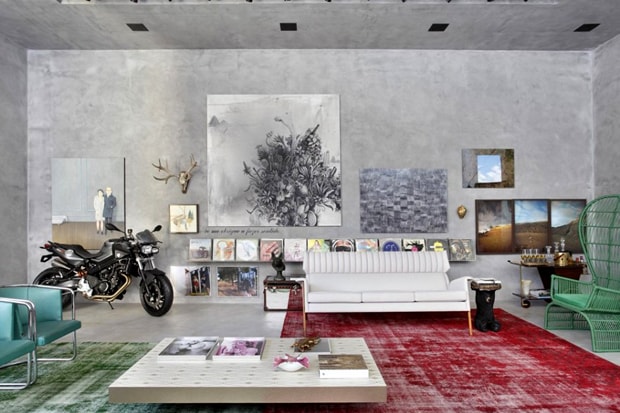HYPEBEAST Trade: Ken Harman of Spoke Art Gallery
In its beginnings, Spoke Art Gallery enjoyed success throwing pop-up exhibits in New York and

In its beginnings, Spoke Art Gallery enjoyed success throwing pop-up exhibits in New York and Oakland, but eventually made the jump and settled in to its own permanent gallery space on Sutter Street in San Francisco. The gallery maintains its focus on exhibiting the works of emerging contemporary artists, who specialize in figurative and illustrative works in pop surrealism and street art. HYPEBEAST recently sat down with Ken Harman — the gallery owner of Spoke Art Gallery, to learn about the level of dedication it takes to open a gallery, and how he strives to maintain the relationships of the artists he chooses to exhibit. From his start in the art world as a writer for such publications as Hi-Fructose, Harman was able to seamlessly transition from the perspective of media, to that of a gallery owner.
Can you introduce yourself and what you do?
Hello, Ken Harman here, I’m an arts writer and gallery owner living in the San Francisco Bay Area. I do a few things – first and foremost is my brick and mortar gallery space, Spoke Art on Sutter Street (former location of the HUF store) and secondly, I’m also a regular contributor to the contemporary arts publication Hi-Fructose Magazine. Outside of that I operate a fine art print shop in Oakland and do some freelance writing when I have the time.
What was it like going from publishing to opening an art gallery?
Scary, mostly. Anyone’s who’s started their own business knows what this is like. Spoke Art really began with a series of chance happenings, no investors, no real plan, just an empty space, lots of enthusiasm, and talented artists.
In previous talks, you’ve mentioned that opening a gallery is a natural progression for somebody of your background. Can you explain?
I do think that the transition from art writer to curator is an unusually common one, more so than a lot of other creative fields. In order to show art, or sell it, you really need to be able to discuss it intelligently and be familiar with the work, artist and context, same as if you want to write an article or essay. Additionally arts writers are in that perfect position where they know a lot of artists, know galleries and already have access to media.
What’s interesting is that if you look at other creative fields it doesn’t seem to really happen at all. For example, I don’t know of any food critics who have opened their own restaurants, or any film critics who have gone on to be successful directors.
If you look at many successful arts writers and tastemakers, you’ll find that most have curated at some point or another. Carlo McCormick’s touring “Downtown Show,” Arrested Motion’s show last year at Above Second in Hong Kong, Wooster Collective’s recent show at Jonathan LeVine, Nathan Spoor’s “Suggestivism” at the GCAC and Bold Hype, the list goes on and on. I’m really looking forward to Amanda Erlanson’s upcoming show at Thinkspace and of course, Roq la Rue Gallery owner Kirsten Anderson is one of my favorite art critics writing today.
What encouraged you to open a gallery? Especially in San Francisco given the amount of competitors?
I often joke and say it was sheer stupidity, which it to some degree it really was. The economic climate right now is probably one of the worst to open a business, let alone one specializing in luxury goods. However, art will always be created and loved and collected, and there are some who say that the worse the world is off, the better its art will be. San Francisco actually seems to have less competition from a gallery standpoint compared to say cities such as Los Angeles and New York. What I love about the city is that as a smaller metropolis, San Francisco has a very strong sense of community. The city is literally seven miles by seven miles, so everyone knows everyone. That aside, we live in a world now where physical location doesn’t mean nearly as much as it used to. Most galleries rely on online or out of state or international collectors, so you no longer need to be in New York or LA or San Francisco or London to be successful. Ultimately, if you have great programming, it doesn’t matter where you are.
How do you aim to differentiate Spoke Gallery from others?
The new gallery paradox is that if you’re not established, successful and talented artists won’t show with you, but it’s hard to establish yourself as a gallery if you don’t show successful or talented artists. Our route around this is to focus on a small group of emerging artists and work with them to further their careers both within and outside Spoke Art.
How do your relationships with artists work and what’s the traditional business model of a gallery?
For us, we treat each relationship with our artists just like that: as a relationship. I don’t agree with my girlfriend all the time, and she agrees with me even less, but regardless there are levels of trust, communication and understanding that keep the relationship on the right path. Same is true for how we work with our artists, it’s all about the trust. The traditional business model for a gallery is to do a different show each month, take a percentage of sales and move on. If the show is successful, you show the artist again 18 months later. If not, you part ways.
With many galleries, each show is a “wham-bam-thank-you-ma’am” situation. For Spoke, we invest in our artist’s careers with a long-term outlook. If we believe in an artist then it doesn’t matter how well they sell, we’ll show them. To support our artists between shows, we’re constantly hustling to get them into art fairs, into other galleries in other cities, and with quarterly print releases to keep their momentum and exposure growing.
How do prints factor into sales?
Prints play a major role for us personally, but this isn’t the case for most. As a newer space, building our own collector base is one of the most important things to our survival. As much as we nurture our artists we also try to nurture our collectors, and prints are a great entry to the world of art collecting. One thing I love about prints as a product is that they’re so accessible; which art should be but oftentimes is unfortunately not. There’s an inherent stigma in the art world, one that revolves around astronomical prices and snooty dealers, which I believe goes against what art should be about. With prints, a fan can pick up a beautiful piece of art for a reasonable price, and being able to offer that is incredibly important to us.
What is the symbiotic relation between galleries and artists?
Ultimately, I think galleries need artists and that artists need galleries. This is less true these days as artists can certainly make a living on their own outside of the gallery/artist paradigm via Etsy, Facebook and eBay. However, working hand in hand with a gallery opens doors to increased exposure, monthly shows, art fairs, collector lists and more. If an artist has a good gallery, that gallery will handle everything: shipping, promotion, inquiries, sales, commissions, etc., leaving the artist to do what they do best: create art.
As artists, what are often the most important factors when working with a gallery?
Trust. Hands down, if you don’t trust your gallery, don’t work with them. If you don’t believe your gallery has your back, don’t work with them. Ultimately it doesn’t matter how much they can sell or how much they promise you, it’s about the dynamic between both.
What are some methods used by artists and galleries to preserve the value of their works (i.e. not selling more than one piece to a collector)?
What happens behind the closed doors of the art world is something that most dealers and gallerists don’t want to discuss. For example, higher-end galleries and dealers will often go to auctions and buy back their own work or the works of their artists just to create hype with high prices. Seven Days in the Art World and The $12 Million Dollar Stuffed Shark are both required reading for entry level collectors and dealers. More responsible galleries take great care in the distribution of their artist’s work. Typically, important collections, such as museums, are the target for emerging and mid-career artists and the gallery will often acquiesce to make such acquisitions happen.
Spreading an artist’s work to multiple private collections is often a good idea as it prevents anyone in the secondary market from having a monopoly in one artist’s work, which if unloaded simultaneously could be disastrous to an artist’s market. Galleries with high capital have been known to buy out their own shows to create buzz and maintain a successful image; it’s sad how a painting’s price and availability is often a collector’s go-to measure of the work’s quality.
How would you define a good gallery both from a business and creative aspect?
A good gallery conducts both fair business and pushes creative bounds. Many artists are unfamiliar with their rights and many galleries take advantage of this. However, the art world is pretty damn small so word does get out. A good gallery supports their artists, supports their collectors, and tries to do something both true and unique.
Any last words?
I’m a sneakerhead, have always been and will always be, so it’s a great honor to be featured on HYPEBEAST as I’ve been reading the site daily since the mid 2000s. Since then though, I’ve grown up a lot and so has the site and its other readers. Art is the natural evolution for me as a collector, sneaker boxes in the closet have been slowly replaced by framed prints and paintings on the walls. If you haven’t bought an original piece of art yet, or gotten a print framed, go out there and do so. There are some amazing deals to be found, especially considering art is something you can enjoy every day, can increase in value, and will last you a lifetime.










